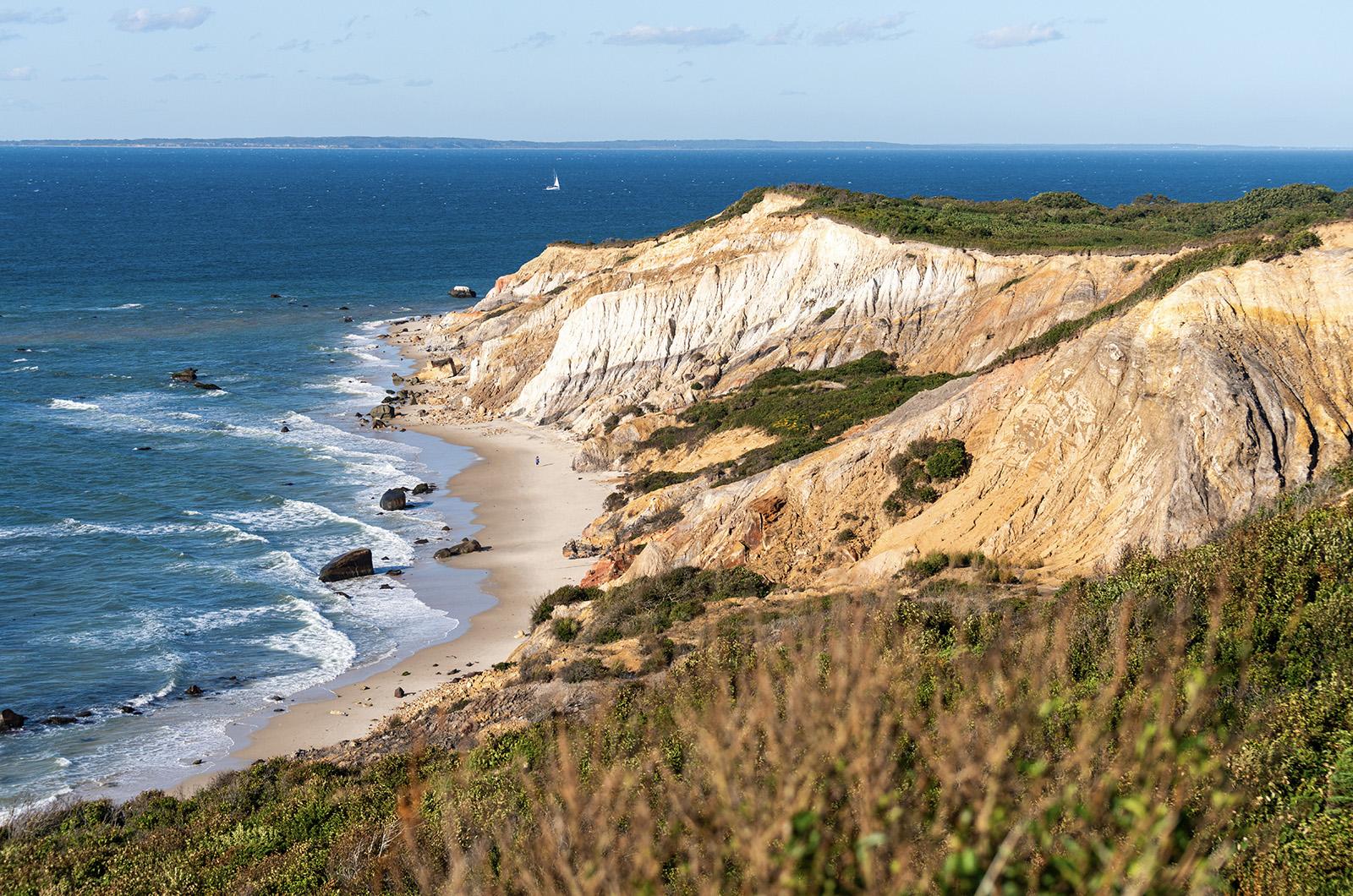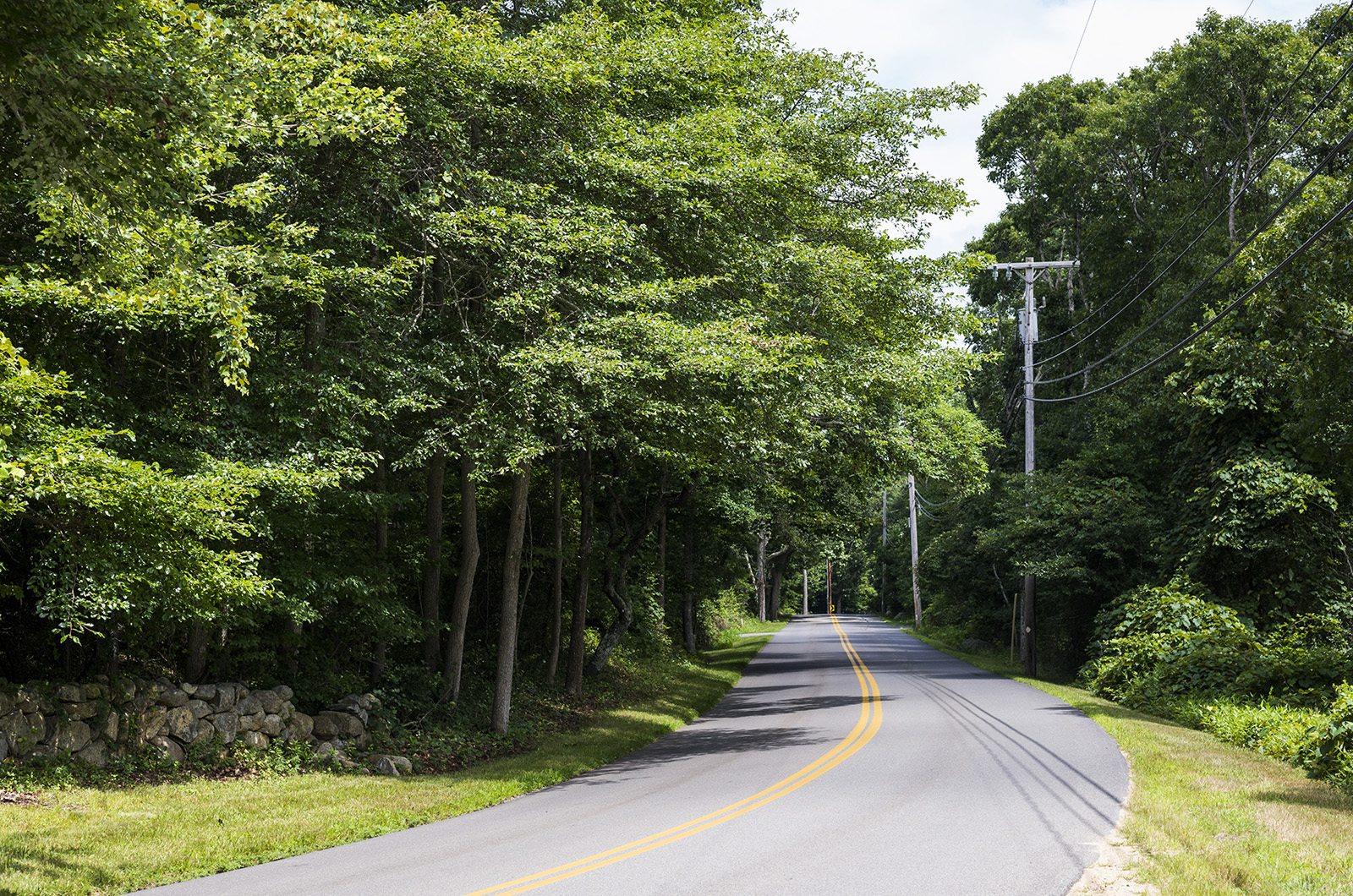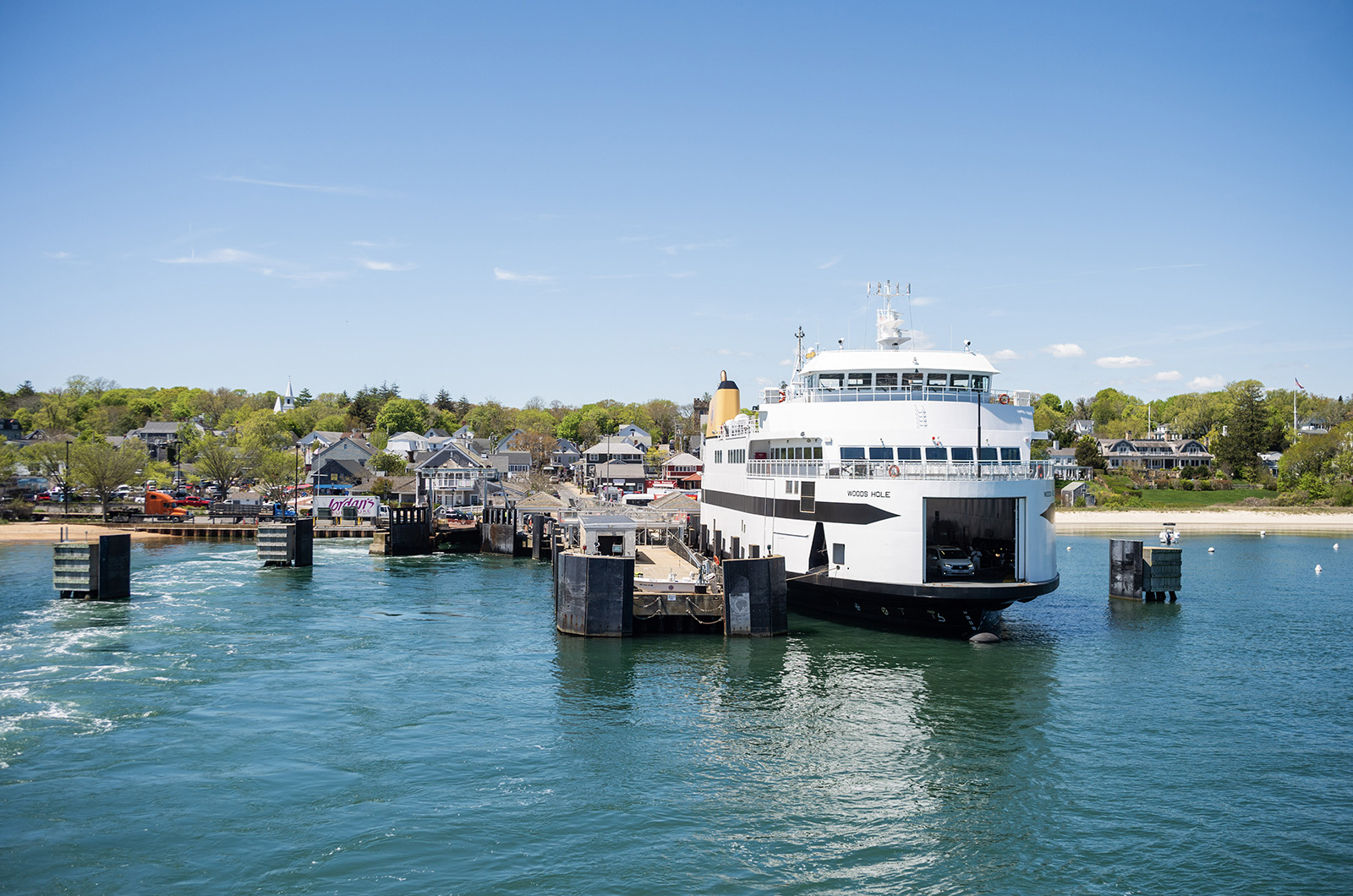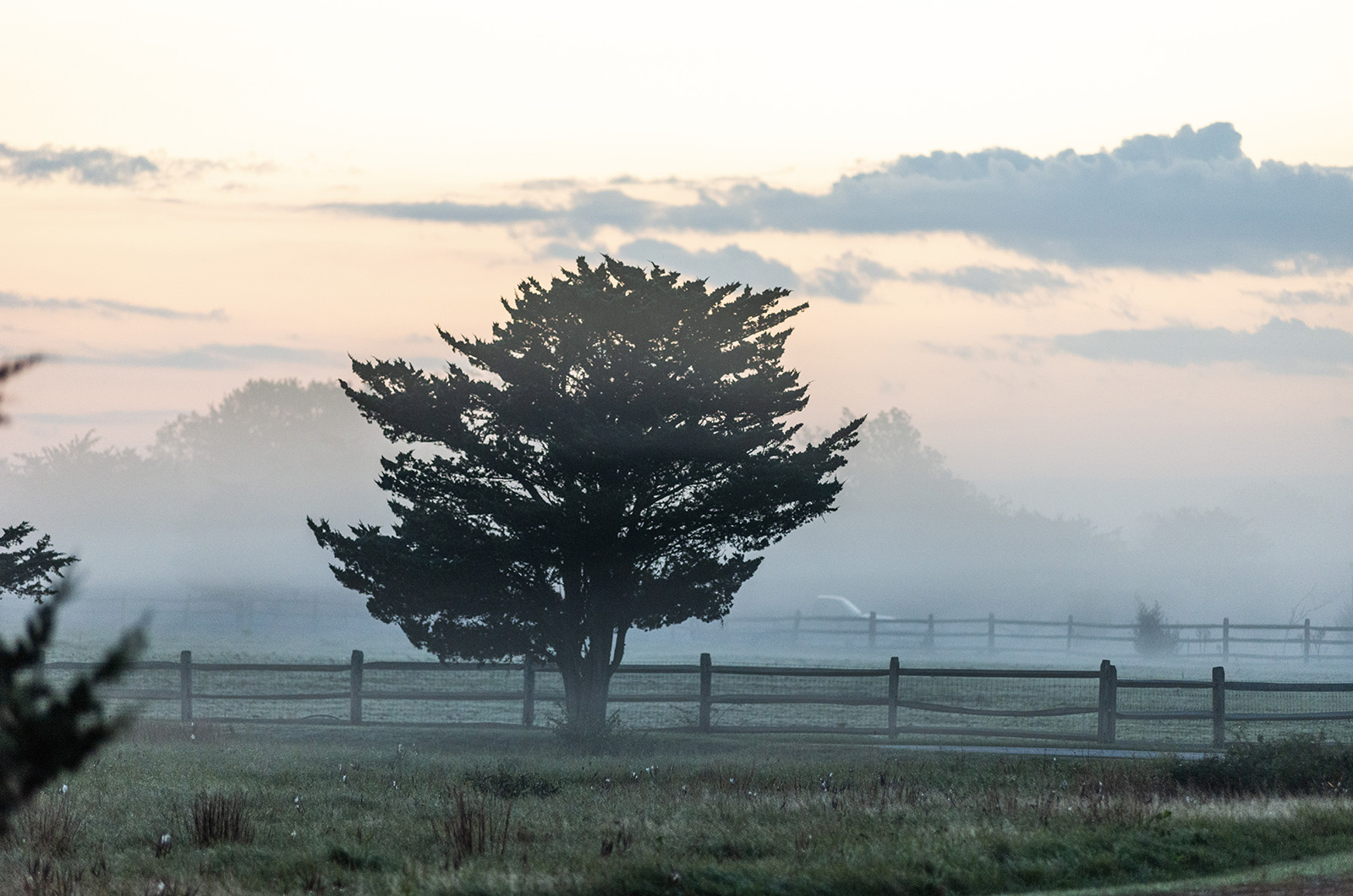In 1972, the Vineyard was largely undeveloped, a quiet place with a scattering of mostly modest summer homes. The natural landscape was unspoiled with broad, open vistas to the sea. There was no zoning except for small areas in the town centers.
But developers were circling. Concerned that the two Islands were at risk of losing their natural beauty, Sen. Edward M. Kennedy introduced the Nantucket Sound Islands Trust Bill that would have placed Martha’s Vineyard and Nantucket in a protected federal trust, much like the Cape Cod National Seashore. The bill sparked ferocious public debate, but also action.
In 1973 every Island town took steps to adopt comprehensive zoning. A year later, a land use commission for the Vineyard was introduced as a compromise to the Kennedy bill. The state commission was endorsed by a referendum vote in all six Island towns in March 1974.
An Act to Protect Land and Water on Martha’s Vineyard was signed into law on July 27, 1974 by Gov. Francis W. Sargent at the Katharine Cornell Theatre.
A timeline follows, with highlights of the commission through the decades.
1970s: Early Years
Much of the early work on the commission was accomplished during a one-year building moratorium, which allowed it to get organized. The first districts of critical planning concern were adopted: the coastal district and Island roads district.
“You are in the forefront of a great issue, the great issue of the time in the country — land use — and you should be supported by the communities and the commonwealth,” the state secretary of the office of communities and development told the young commission, three months after the first election.
Almost immediately, the commission also saw its first major court challenge. The Strock family had already filed plans to build 800 houses on 500 acres around the western end of Sengekontacket Pond. Under ordinary zoning rules, the plan would have been grandfathered and protected from review by the commission. But in one of its first pivotal decisions, the commission decided that it would review the plan as a development of regional impact. The Strock family sued.
The Island Properties case later became a landmark ruling in state Supreme Judicial Court — which ruled that the commission could review the plan. Eloquent language in the decision said protection of the Vineyard and its natural resources were important to the commonwealth as a whole.
Believed to be the single-most important case in the history of the commission, Island Properties would be cited again and again for the next 50 years, as the commission prevailed in nearly every court challenge it faced.
Today the former Strock property is the site of the Farm Neck Golf Club, surrounded by some residential development.
1980s: Return to the Fold
Perhaps a natural outgrowth of the Vineyard’s entrenched dislike of regional government (dating back even farther to the 1950s when the regional high school took years to win approval), MVC relations with the six Island towns have been testy at times.
In the late 1970s Edgartown was in revolt, unhappy about the power the MVC held to impose rules for the DCPCs. Amid cries of home rule, in 1978 the town withdrew. Tisbury followed suit in 1980 after the commission denied a second slip for the Steamship Authority. (The SSA sued and the MVC won the case, but the boat line prevailed later when the state legislature allowed it to be exempt from commission review.)
Both towns returned in 1984, making the commission whole again. But damage had been done. One visible example today is at Katama, where a hodgepodge of residential development sprang up in and around the sweep of rare Great Plains grasslands that characterize the area on the southeastern edge of Edgartown. Later saltwater intrusion in private water wells would become a problem.
In 1987 Edward Redstone, former owner of the Martha’s Vineyard National Bank, proposed a 55,000-square-foot bank/supermarket/mall complex on the site of the old Nobnocket garage on State Road in Vineyard Haven. Nobnocket was a flashpoint for controversy, Island-style — someone made bumper stickers declaring NobNOcket, while others closed their accounts at the Redstone bank in protest. The project was approved by the MVC, but Tisbury dug in its heels and resistance grew stronger. Eventually Mr. Redstone gave up the fight and withdrew the plan. “I am just too tired and old,” he said.
1990s: David and Goliath
Development patterns on the Vineyard have often mirrored the boom and bust cycle of the national economy, and a recession helped usher in a quieter period for development reviews. There was one notable exception: Herring Creek Farm.
In the 1990s, Neil and Monte Wallace, the owners of Herring Creek Farm in Edgartown, filed plans for a high-end development of 54 houses and a private beach club on 200 acres at the historic farm. Reaction against the plan was swift, but the Wallaces were ready to wage a battle against both the commission and the town of Edgartown. There were expensive lawsuits, including a side challenge to three-acre zoning in Edgartown that was argued all the way to the state Supreme Court. The town won the case — and once again Island Properties was cited.
Herring Creek Farm went on for 10 years and was described as a David and Goliath battle — one small town and its attorneys taking on the deep-pocketed owners of the farm and their teams of Boston lawyers.
In the end a complicated deal involving The Nature Conservancy and a handful of private landowners kept most of the land out of development. But the high-profile nature of the project did not end there. The Nature Conservancy later became embroiled in a U.S. Senate investigation into possible violations of the federal tax code — all tied to the Herring Creek Farm deal.
Early 2000s: Planning, Planning, Golf Courses
At the turn of the millennium MVC executive director Mark London renewed the commission’s emphasis on planning, launching a years-long effort that resulted in the Island Plan in 2009.
On the development front, what became known as the golf course wars shaped up. In the early 2000s three proposals for high-end golf courses were in progress. One large swath of land where a golf course was planned is now mostly conservation land on the Edgartown Great Pond. Another plan for a golf course at the Southern Woodlands in Oak Bluffs that would have cleared hundreds of acres of trees, was turned down by the commission in a close vote in 2002. Today that land is now largely owned by the Martha’s Vineyard Land Bank.
The commission did approve a single golf course during that period: the Vineyard Golf Club in Edgartown.
MVC Today: Climate Change, Pond Pollution, Historic Preservation
Ten years into the new century the commission found itself confronting a new suite of issues. Climate change, alternative energy planning and saltwater pond pollution from nitrogen were suddenly in the forefront. Water quality planning has been a tenet of the commission from the outset, but protecting the Great Ponds that ring the south shore from degradation began to take on more urgent tones. The Massachusetts Estuaries Project was launched to collect more data and use emerging technology as a tool to better monitor ponds.
More and more the commission finds itself in the middle of debate over historic preservation on the Island, sparked in part by the recent proliferation of demolition of older houses.
Affordable housing has been a priority issue from the start — the commission adopted its first affordable housing policy in 1975 — but housing too has taken on more urgent tones with an escalating crisis fueled by an overheated real estate market.
And if lately it feels at times like the MVC is building the plane while it flies it — perhaps that has always been the way.












Comments
Comment policy »